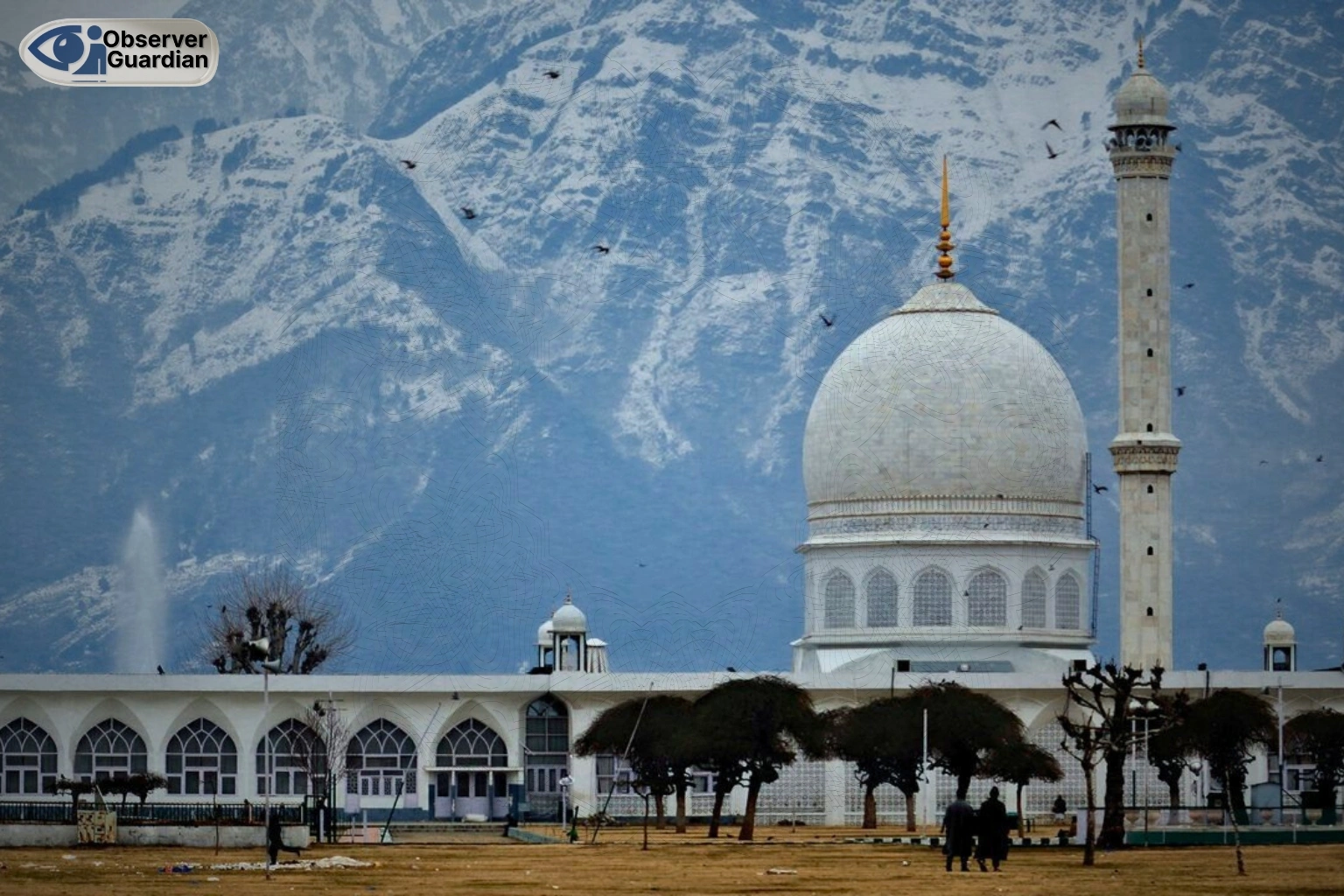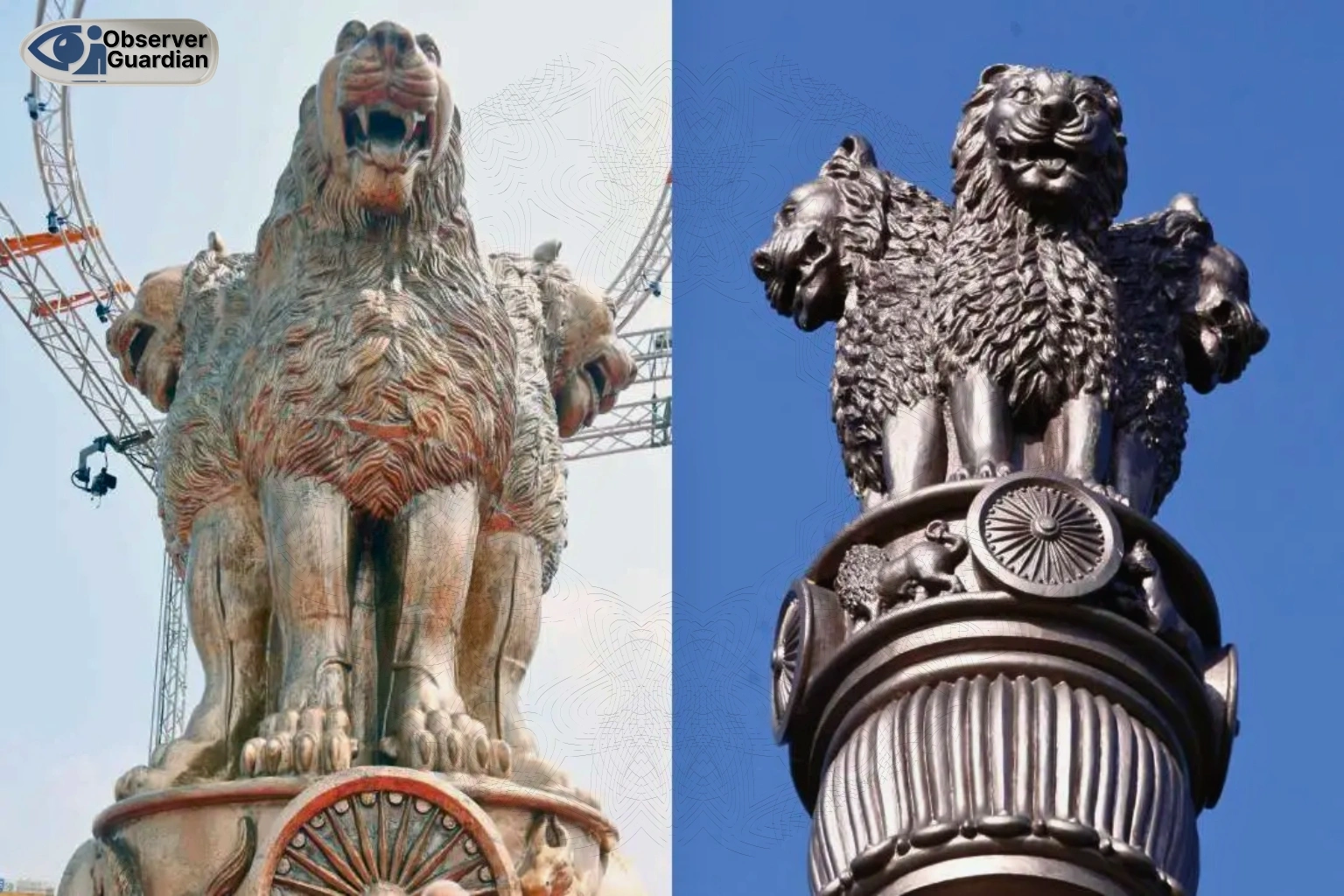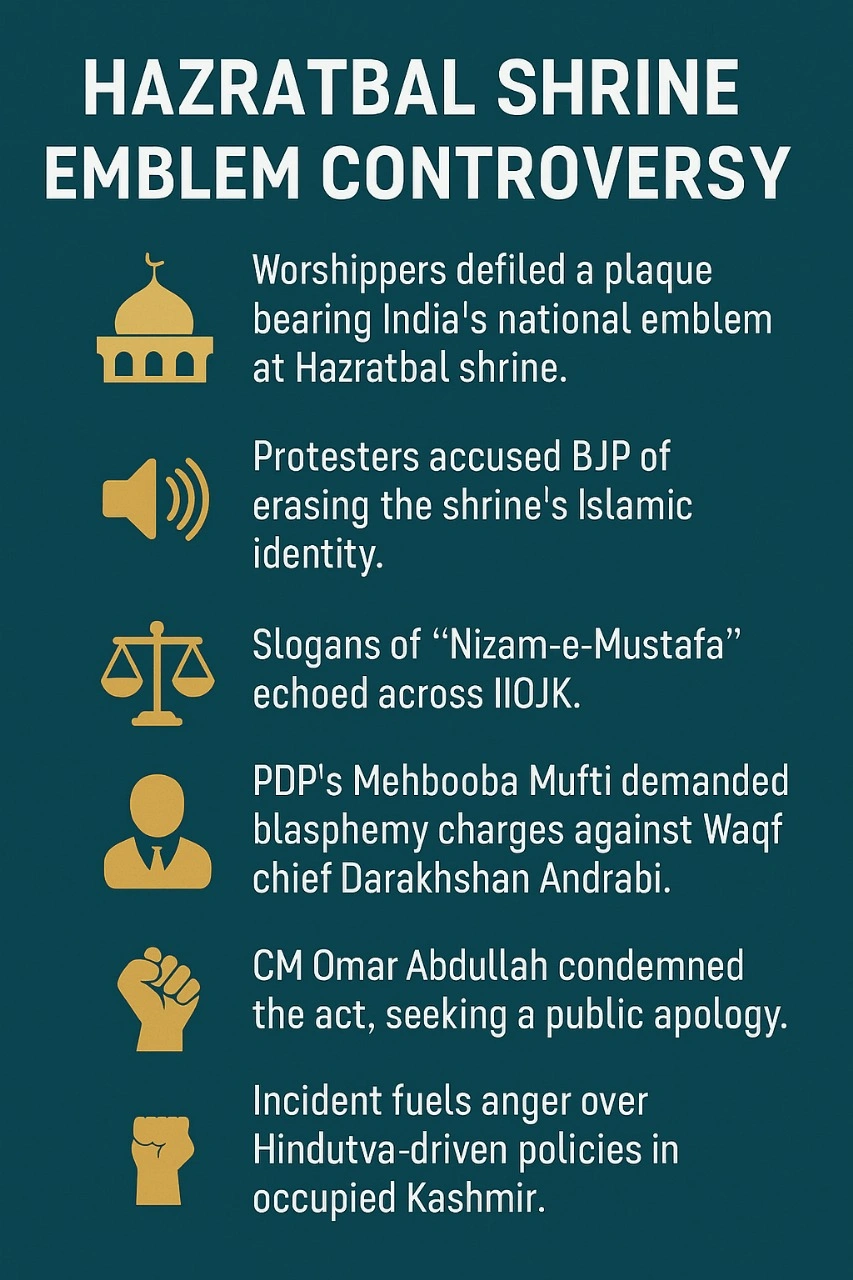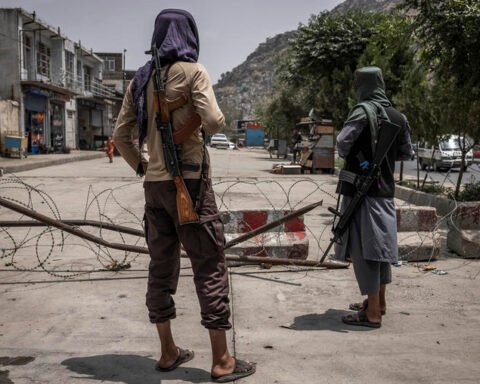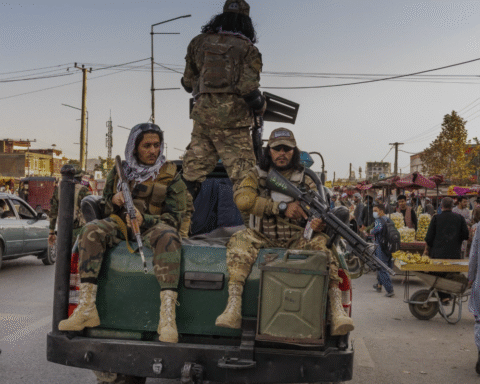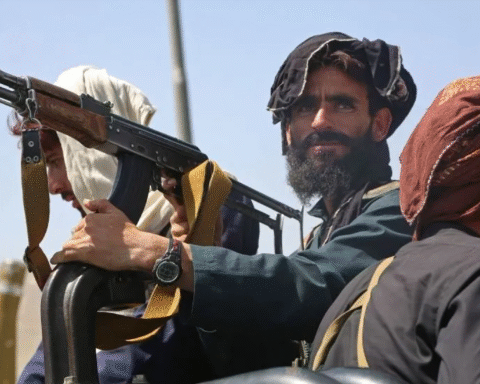A new granite plaque went up at the Hazratbal shrine in Srinagar. It was not just a marker. It carried India’s national emblem with the four lions, along with some official names and a Quranic phrase. For a lot of worshippers, seeing a state symbol so close to a sacred space felt off. After prayers, people gathered, tempers flared, the plaque was defaced, and the whole thing spiraled in minutes. Videos show stones flying and chants of “yehan kya chalega, nizam e Mustafa.” (we want the establishment of Islamic Rule). One did not have to be there to feel the temperature rise.
That small slab quickly turned into a symbol of something bigger. Critics saw it as yet another move to rub out the distinct Muslim character of IIOJK. Supporters of the authorities said it was just a formal sign for renovation work, and the real problem was vandalism. Both stories traveled fast, especially online.
Darakhshan Andrabi, who heads the Waqf Board and is a BJP leader, called the defacement a terrorist act and pushed for tough action. That made her the center of the storm. However,
Mehbooba Mufti from the PDP flipped the script and said Andrabi should face blasphemy charges for bringing a national emblem into a shrine space and pairing sacred words with officials’ names.
Omar Abdullah, the former chief minister, also criticized the decision and asked the Waqf chief to apologize for hurting religious sentiments.
Why this strikes such a nerve is about what people expect when they enter a shrine. They come to pray, find quiet, and feel close to the divine. They do not expect state insignia in that space.
Even if the intention was simply to mark a project, it reads differently when it is inside a religious precinct. Many Muslims also prefer avoiding carved figures in places of worship.
Four lions on a stone might be historical and secular, but context changes how it lands.
There is also the political backdrop. Over the last few years, a lot of decisions in the region have been read through a Hindutva lens, rightly or wrongly.
So, when a national emblem appears at Kashmir’s most revered Muslim shrine, it lands on ground that is already sensitive. Anger at the plaque became anger at the BJP and at what many see as a steady push to standardize religious spaces at the cost of local identity.
Police stepped in after the defacement and made detentions. I have seen different numbers reported, so I will not pretend there is a single confirmed figure. Either way, the story moved from a design choice to a law and order case. That shift usually hardens positions instead of cooling them.
Could this have been avoided? Honestly, yes. A quick round of consultation with local clergy and community elders would have saved everyone grief. In most shrines, even small signs get discussed. A national emblem with sculpted figures should have raised obvious questions. Pairing it with “Bismillah” and officials’ names only made it feel like self-promotion at the threshold of a prayer area, which is poor judgment at best.
Where do we go from here? A few straightforward steps could help. The Waqf Board can acknowledge that the placement and design were insensitive, even if the intent was not. A simple, clear apology would go a long way. The administration can say plainly that national symbols deserve respect, but shrines have their own norms that should be honored. That is not political weakness. It is common sense. And everyone should resist turning Hazratbal into a permanent rallying point. Let the dargah be what it has always been for people in the Valley: a place of devotion and calm.
Online, the battle lines are already drawn. Critics of Hindutva are using the episode to highlight policies they view as anti-Muslim. Government supporters point to the defacement and call it intolerance. No one is going to win this argument with catchy posts or tough guy press conferences. What might help is something smaller and more human. Take down the offending tablet. Keep politics outside the prayer area. Set a clear, shared guideline for plaques, nameplates, and emblems in religious spaces so we do not repeat this next month at another shrine.
Hazratbal sits by Dal Lake and has always had a way of softening people. It deserves a gentler ending than this. Respect the sanctity of the place, listen to the community before making changes, and keep the focus on worship rather than branding. It is not complicated. It is just basic respect.
Disclaimer: The views and opinions expressed in this article are exclusively those of the author and do not reflect the official stance, policies, or perspectives of the Platform.

